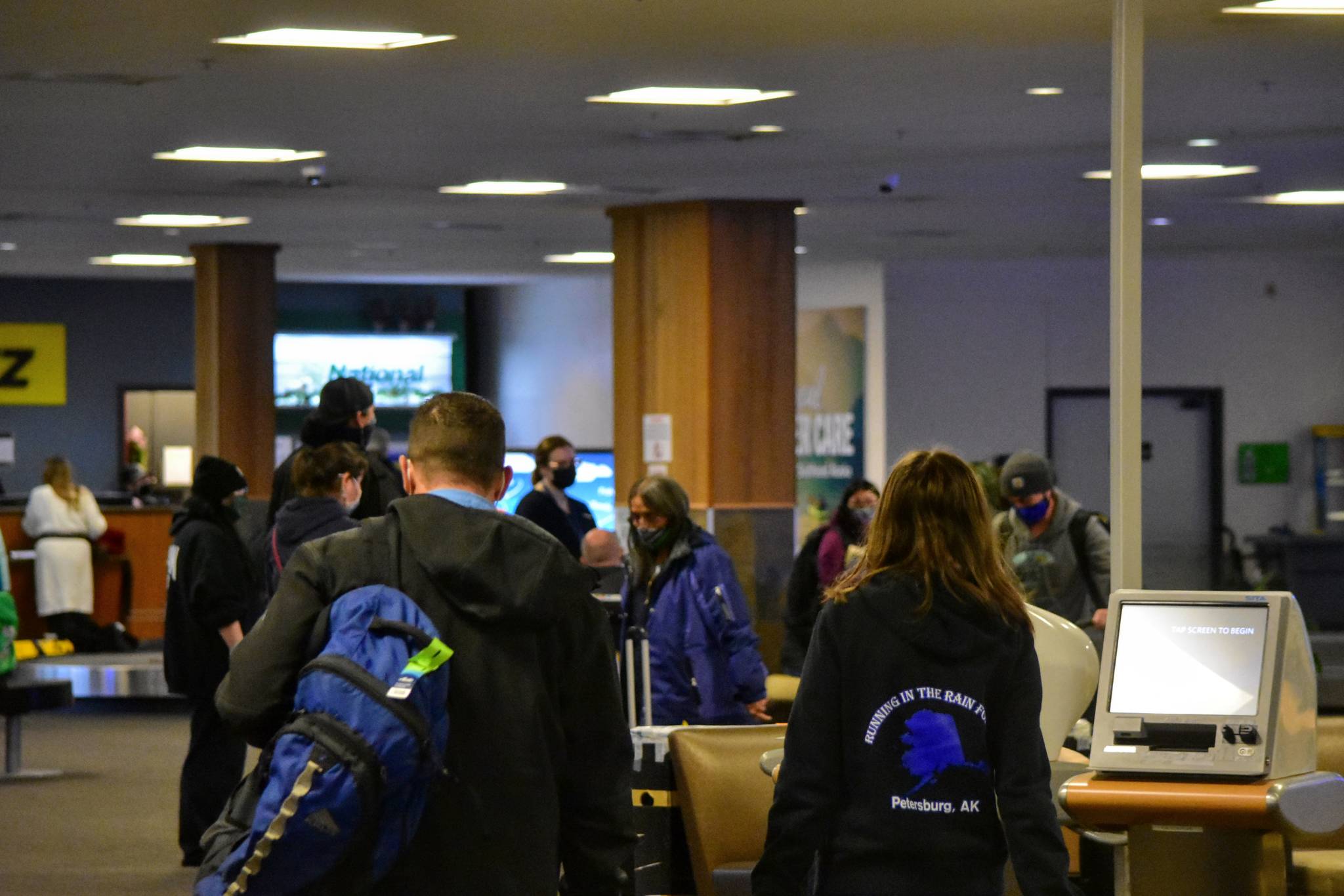Aviation traffic at the Juneau International Airport was down 62% in 2020—a fact that has airport and city officials worried.
“We saw a 95% drop between March and April, putting travel down to mid-1980s numbers,” said Patty Wahto, Juneau’s airport manager in a Monday evening joint meeting with the City and Borough of Juneau Assembly Committee of the Whole. “It’s now moving up a little.”
But, Wahto said it could be years before travel returns to pre-pandemic levels.
Air travel dropped off considerably last spring as COVID-19 infections spiked across the country, and officials discouraged air travel amid lockdowns. An extremely limited tourism season in 2020 added to the airport’s woes, and the outlook for the 2021 cruise season looks grim, airport officials said.
“Cruise ship passengers are a big deal,” Wahto said. “For many of our tenants, that’s like 31 months with no revenue.”
She said tenants who operate helicopters and small planes from the site are especially impacted by the lack of cruise ship passengers.
“We need their revenue down the line,” Wahto said.
Lower travel numbers mean less revenue for the airport, which could mean future fee increases, scaling back services or both, airport board members told the committee.
Air travel down by more than half, airport officials say
“It’s not clear how long it takes to get back to 2019 passenger levels,” said Angela Rodell, airport board member. “In our minds, we are starting to consider what service cuts might look like as we prepare budgets two years out.”
CARES Act money fills some gaps
Lower travel numbers are squeezing airport tenants’ finances, said Jerry Godkin, the airport board chair.
“Everything is down. The only way the airport is surviving is on CARES Act funding,” he said. “The concession side was down between 58 to 75 percent compared to 2019.”
He explained that some of the airport’s CARES Act money was being used for rent abatement to ease the pinch concessioners are feeling.
According to a presentation shared in the meeting, the airport received $21.7 million in CARES Act funding in April 2020 and applied for two more recently-approved federal assistance grants totaling $3.4 million.
“Our CARES Act money is where our tenents get relief. Money is budgeted for the next three years,” Godkin said. “Some are seeing small increases for 2021, but they are still down from normal,” he said. “A few said the Payroll Protection Plan is helping, but more help is needed. Everyone has their fingers crossed.”
Wahto said that airport concessioners’ long-term health is key to the long-term financial health of the airport.
Juneau officials discuss odor at Lemon Creek-area dump
“We watch as we go and ask what are revenues doing? What are our tenants doing? Will they be solvent? We are hoping they stay in the game,” Wahto said. “This is the reason for rent abatement.”
Terminal work continues
If lower air travel has had one silver lining, it’s that it’s made construction work on the new terminal easier, board members said.
The new terminal is on track to be complete by the end of the year and is projected to yield savings on fuel expenses and reduce the size of the airport’s carbon footprint, Wahto said.
• Contact reporter Dana Zigmund at dana.zigmund@juneauempire.com or 907-308-4891.

